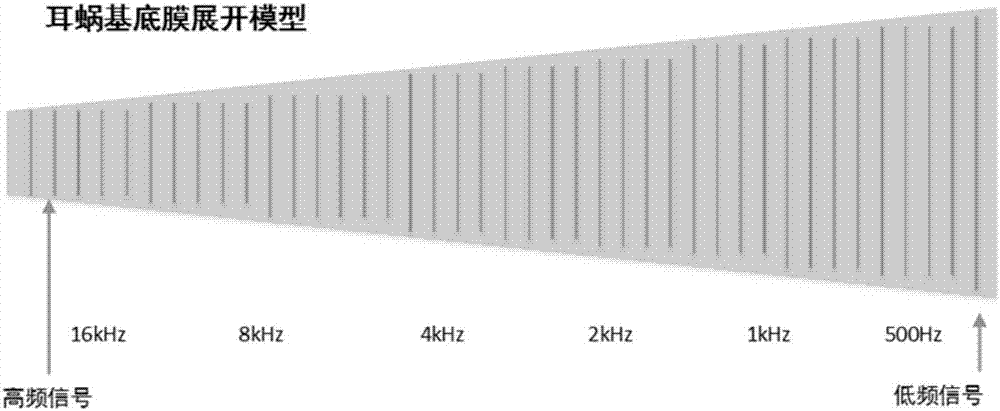Detection method and device for brainstem auditory evoked potentials
An evoked potential, brainstem technology, applied in the field of neuroengineering, which can solve the problems of poor ABR signal quality, failure to consider the sound conduction traveling wave delay, and small response amplitude of ABR waveforms.
- Summary
- Abstract
- Description
- Claims
- Application Information
AI Technical Summary
Problems solved by technology
Method used
Image
Examples
Embodiment 1
[0030] Figure 1A It is a flowchart of a method for detecting auditory brainstem evoked potentials provided by Embodiment 1 of the present invention. This embodiment is applicable to the detection of auditory brainstem evoked potentials. The detection device can be implemented by means of software and / or hardware, and the device can be integrated in the terminal device or in the application end of the terminal device. Wherein, the terminal device may be, but not limited to, a mobile terminal (tablet computer or smart phone), or a fixed terminal (desktop computer or notebook).
[0031] Wherein, the application end can be a plug-in of a certain client embedded in the terminal device, or a plug-in of the operating system of the terminal device, and an auditory brainstem evoked potential detection client or terminal device embedded in the terminal device The auditory brainstem evoked potential detection application program in the operating system is used together; the application ...
Embodiment 2
[0043] Figure 2A It is a flowchart of a method for detecting auditory brainstem evoked potentials provided by Embodiment 2 of the present invention. This embodiment is optimized on the basis of the above-mentioned embodiments. In this embodiment, the synthesis of the time-domain sweeping sound signal capable of compensating the delay of the traveling wave of the cochlear basilar membrane is optimized as follows: The delay model adjusts the delay of each frequency of the sound signal in the frequency domain to obtain a frequency-domain sweep sound signal that can compensate for the traveling wave delay of the cochlear basilar membrane; the frequency-domain Fourier inverse transform is performed on the frequency-domain sweep sound signal to obtain the obtained The time-domain frequency-sweeping sound signal is described.
[0044] Correspondingly, the method in this embodiment specifically includes:
[0045] S201. According to the traveling wave delay model of sound conduction...
Embodiment 3
[0062] image 3 A structural diagram of an auditory brainstem evoked potential detection device provided in Embodiment 3 of the present invention. This embodiment is applicable to the detection of auditory brainstem evoked potentials. The device can be implemented in software and / or hardware. The device can be integrated in the terminal device or in the application side of the terminal device. Wherein, the terminal device may be, but not limited to, a mobile terminal (tablet computer or smart phone), or a fixed terminal (desktop computer or notebook).
PUM
 Login to View More
Login to View More Abstract
Description
Claims
Application Information
 Login to View More
Login to View More - R&D
- Intellectual Property
- Life Sciences
- Materials
- Tech Scout
- Unparalleled Data Quality
- Higher Quality Content
- 60% Fewer Hallucinations
Browse by: Latest US Patents, China's latest patents, Technical Efficacy Thesaurus, Application Domain, Technology Topic, Popular Technical Reports.
© 2025 PatSnap. All rights reserved.Legal|Privacy policy|Modern Slavery Act Transparency Statement|Sitemap|About US| Contact US: help@patsnap.com



